There are some herbs that still thrive well in partial shade or even prefer it. In our article you will find a list of well-suited herbs for partial shade.
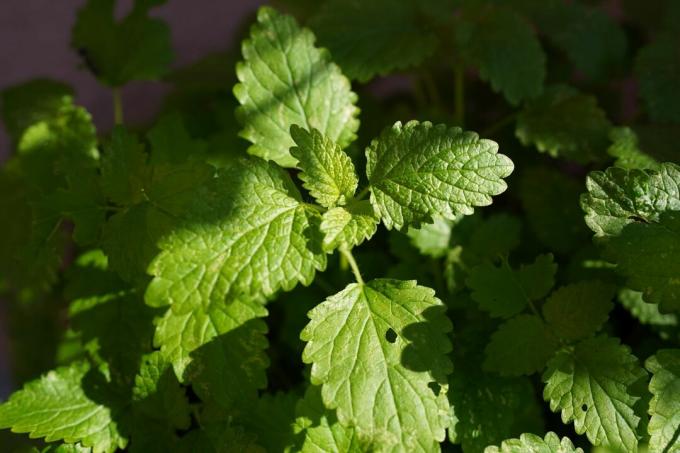
Are there also herbs that thrive in semi-shady locations? The answer is yes! There are some herbs for partially shaded locations. We introduce you to herbs for the penumbra and inform you about their nutritional requirements. There are herbs that only need a few nutrients, as well as those that only provide a rich yield with a high supply of nutrients.
Herbs for the penumbra with low nutrient requirements
The selection of semi-shade herbs that are content with nutrient-poor locations is relatively small, but there are still a few special treasures among them. Our peat-free, for example, is suitable for the cultivation of semi-shade herbs Plantura Organic Herb & Seed Soil, whose loose structure and low fertilization is optimally adapted to the requirements of these plants.
chervil (Anthriscus cerefolium): Chervil is very well suited as a herb for the penumbra, as its small and thin leaves burn quickly in sunny locations. The usually biennial, hardy herb prefers loose, humus-rich and moist soil. With its spicy, slightly peppery taste, chervil is often used to refine soups and sauces, which is why it is also known as "soup herb".

lemon balm (Melissa officinalis): Originally from the Mediterranean region, lemon balm belongs to the same plant family as rosemary and thyme. In contrast to these, it tolerates partial shade well and can stay there for up to 30 years. It is best grown in well-drained soil as it tolerates drought better than too much moisture. Above all, the leaves are used, which, in addition to the fine lemon aroma, also have many health-promoting ingredients.

burnet (Sanguisorba minor): The burnet is one of the lesser known, but no less tasty and healthy herbs for partially shaded locations. Since they are rarely found in supermarkets, growing them in your own garden is all the more worthwhile. The herb, also known as "little burnet", prefers rather dry, lean and loose soil. Therefore, for the cultivation, for example, our Plantura Organic Herb & Seed Soil mixed with sand or crushed expanded clay to improve water permeability. Both leaves and flowers can be eaten. Their best-known use is in the Frankfurt green sauce, but they are also suitable for uncooked dishes.

Jiaogulan (Gynostemma pentaphyllum): Jiaogulan is also known as the "herb of immortality" because of its alleged anti-aging effects. It is best known in China, where many people take it in tea, for example, because of its apparently life-prolonging effect. And indeed, in the home region of Jiaogulan, a surprising number of people live to be over 100 years old. In the bed, the plant prefers semi-shady locations with nutrient-rich, moist soil: the herb still grows well even with a lower nutrient supply. Jiaogulan likes to climb, which is why cultivation in hanging baskets is recommended.

garden cress (Lepidium sativum): Garden cress is said to be the fastest harvesting vegetable. In good conditions you can do the first Herbs on the windowsill harvest after four days. Things don't go quite as quickly in the garden, but here too the cress should be ready to harvest after two weeks at the latest. Cress is very undemanding in terms of location, because it germinates and grows almost anywhere. It usually takes a little longer in the penumbra than in the sun.
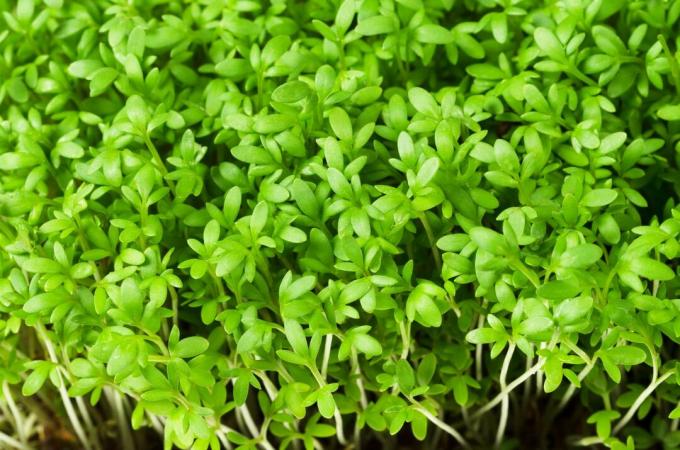
sage (Salvia): Sage actually feels most comfortable in the sun, but among the almost 900 species there are also some that are suitable for planting in partial shade. For example, the steppe sage (Salvia nemorosa) or Japanese sage (Salvia nipponica) even if they are not in direct sunlight. Like most other species, sage that grows in semi-shade prefers dry and poor soil.
Herbs for the penumbra with higher nutrient requirements
For the cultivation of the following semi-shade herbs, a more nutrient-rich substrate is ideal, such as ours Plantura organic universal soil. Chives, peppermint and co. thrive best when they are well supplied with nutrients. Our peat-free mixture not only supplies nutrients from organic fertilizer for a long time, but also effectively stores the nutrients from later fertilization.
chives (Allium schoenoprasum): Chives are one of the most popular kitchen herbs and are almost indispensable for salads or herb quark. Growing it in your own garden is easy as long as you take care to keep the soil moist at all times. Although chives are well suited for sunny locations, there is a high risk that the soil will dry out. Chives should therefore preferably be grown in semi-shade.
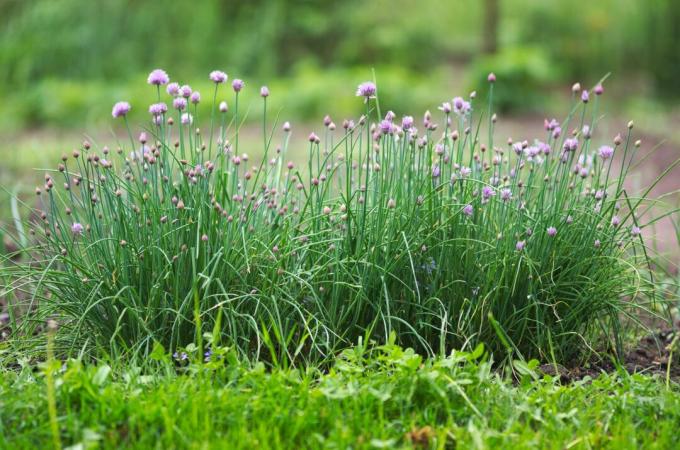
peppermint (mentha x piperita): Peppermint is easy to care for and can quickly take over the entire bed if you are not careful. It thrives best in nutrient-rich, humus-rich and moist substrates. If you can offer peppermint these conditions, nothing stands in the way of a rich harvest of leaves. The leaves can be used fresh or dried, for example in teas or to flavor water.

parsley (Petroselinum crispum): Parsley prefers bright locations, but does not tolerate too much heat, which is why growing parsley in partial shade is better suited. There the parsley should stand on a loose, nutrient-rich and rather moist soil. The typical penumbra herb is not only used by us to refine and decorate many dishes, but enjoys great popularity worldwide: for example in Arabic tabbouleh or in French persillade. Parsley is suitable both for herb beds in partial shade and for cultivation in pots as an herb for partially shaded balconies.

Caraway seed (Carum carvi): Caraway is a wild perennial that is also native to us and is found in nature, especially on rather dry meadows. In the garden, caraway prefers loamy, not too acidic soil. To raise the pH of the soil, you can mix it with lime, for example. In terms of nutrient supply, caraway is relatively frugal, because although it is happy about a large supply, it can also get by with little. Since cumin is a biennial herb, the seeds cannot be harvested until the second year of cultivation.

perilla/ Red Shiso (Perilla frutescens): Perilla is an annual herb that is used extensively in Asian cuisine. It needs little sun and is relatively starved of nutrients compared to other herbs. Therefore, attention should be paid to a nutrient-rich substrate for cultivation. If you are a fan of sushi, it is definitely worth growing, because in Japan the penumbra herb is used a lot for it.
lovage (Levisticum officinale): The lovage, also known as "Maggikraut", is an excellent herb for the penumbra. The term "herb" is a bit of a misnomer here, however, as it's a perennial herb that typically grows over a meter tall. Lovage is one of the heavy feeders and prefers light, calcareous soil. Maggi herb is often used to replace the well-known condiment of its namesake. Incidentally, the seasoning sauce contains no lovage and yet the taste of the herb comes pretty close to that of the sauce.
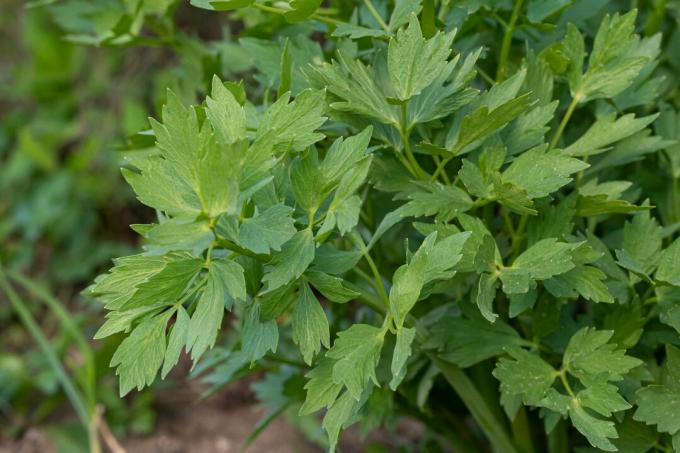
tarragon (Artemisia dracunculus): Even if tarragon prefers sunny, nutrient-rich locations, the herb does well in semi-shady locations that are a little leaner and drier. In addition, tarragon is one of the hardy herbs and will delight you for several years with its leaves, which can be used in a variety of ways in the kitchen.
tip: Tarragon is ideal for seasoning grilled food such as meat and fish. We recommend more herbs for grilling.

chamomile (Matricaria recutita): Chamomile is one of the most well-known medicinal herbs. Its flowers are used, for example, for teas for stomach problems or for anti-inflammatory ointments. In the garden, the medicinal herb does well in partially shaded locations, as long as it is supplied with enough nutrients and water and is allowed to grow in rather loamy substrates.
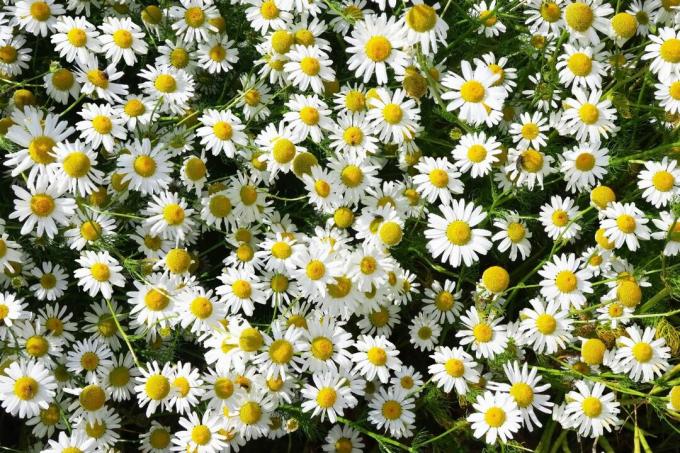
If your garden also has some sunny or shady corners, you can find herbs for sunny locations and Herbs for shady locations Continue reading.



